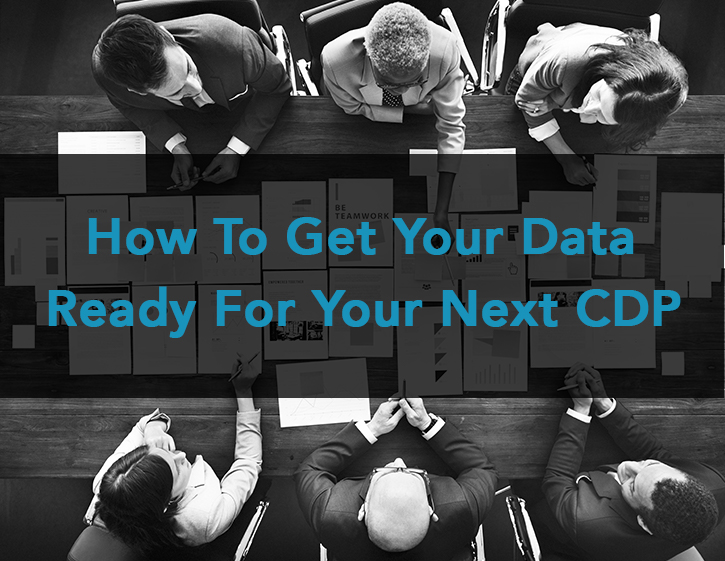In a Heartbeat: The True Value of a CDP’s Real-Time Capabilities
November 11, 2019According to The Relevancy Group CDP Buyer’s Guide 2019, real-time targeting is a key CDP use case, used by 54 percent of marketers with a CDP to execute highly relevant campaigns, with messaging that reaches an intended target at the appropriate time to drive intended behaviors. According to the Guide, “Speed of data is critical to (these) marketers and the data agility that a CDP affords is a key toward reaching the right target, at the right time, with the right message.”
For retailers and brand marketers, “speed of data” translates to successful personalization through practical use cases such as delivering a perfectly timed offer the instant a customer appears in a channel, or delivering tailored content to a first-time visitor to a website tuned to their preferences and behaviors.
The benefits of real-time extend far beyond the retail sector, however, and nowhere is the benefit more important than care management, where life or death decisions may depend on offering real-time support to a patient. Using real-time patient data to manage the health of an at-risk population arrives at the very essence of CDP’s purpose.
The real-time processing engine that supports real-time engagement is ultimately what drives a CDP’s value, which makes it more than just a pillar of a successful martech stack. For retailers and brand marketers, that value is measured in driving revenue. For healthcare payers and providers, value is instead measured in better health outcomes, improved patient engagement and satisfaction, and lower total costs.
Value-Based Care and Telemedicine
Value-based care is a growing performance-based compensation model that rewards physicians, hospitals, and other healthcare providers on the quality of care they deliver rather than services rendered. Under the value-based care model, providers have a financial incentive for the long-term health of a patient.
As the leading cause of hospitalization for people older than 65, congestive heart failure provides a model value-based care use case. A treatment plan typically consists of regular monitoring, blood tests, medication, and lifestyle management. This makes telemedicine (defined as the distribution of health services and information electronically and with telecommunication technologies) ideal to help minimize hospital re-admittance rates and prevent disease progression – the two main treatment goals.
These were key metrics for an innovative telemedicine research program piloted by a hospital, with RedPoint Global as one of its technology partners. The hospital was managing care for 300 congestive heart failure patients, and wished to gather real-time data from connected devices to monitor their health and recommend care.
Real-time data such as vital signs could then determine a patient’s care pathway, unique for each patient based on real-time conditions. A pathway could consist of a call from a nurse, a motivational message, a visit from an ambulance, or scheduling a new treatment plan – all dependent on real-time signals from a connected device.
Optimizing Care Pathways with a CDP
Congestive heart failure patients typically have a team of providers invested in their long-term care, including primary care physicians, cardiologists, nurses, dieticians, pharmacists, exercise specialists, and social workers. For the research program to work, it had to centralize patient data into a single platform – a central requirement for real-time care management.
The RedPoint Customer Data Platform integrates data from any source or type into a central platform, providing care managers with a unified customer profile and a single point of control over data, decisions, and interactions to expertly manage a patient’s care pathway in real time based on up-to-date data.
Organizations benefit from a CDP’s real-time capabilities because it consistently provides a next-best action or recommendation in any channel in the context and cadence of a unique customer journey. In care management, a next-best action is similarly tied to a customer journey – in this case a patient journey or care pathway – based on everything that is knowable about a patient.
The pilot study provided invaluable patient data, but a real-time next-best action is not based solely on a real-time connected device, but rather a patient’s entire medical history. A unified customer profile, also known as a golden record, is persistently updated to include real-time data from every source. Combined with in-line analytics and automated machine learning, the golden record provides caregivers with a next-best action that is relevant to the patient’s journey at a precise moment in time. The analytics are key to scaling this to personalized engagement for thousands or millions of consumers.
A connected device could, for example, monitor and transmit a patient’s heartrate, respiratory rates, and physical activity. The device data would then be integrated in real time with a patient’s entire medical history and records – interactions with dieticians, exercise specialists, and other providers, test results – as well as second-party and third-party data, and structured, unstructured, and semi-structured data to become part of the golden record. An automated machine learning model programmed to determine risk factors, a re-admittance score, or another metric will intelligently orchestrate a next-best action optimized for the patient’s care pathway.
An Ally in the Healthcare Space
In addition to the heart research program, RedPoint is partnering with other healthcare providers to help advance value-based care strategies in an ongoing basis. Last year, RedPoint partnered with Lucerna Health to advance the transformation to value-based care through personalized engagement.
Patient behavior is the number one determinant of healthcare outcomes for several conditions, and the partnership was formed to help shape behavior through those personalized engagements. While the CDP was conceived as a marketing solution, and a real-time engine make it perfectly suited to personalizing a custom experience in the context of a unique customer journey, there is no more noble purpose than saving lives. With one heartbeat nearly every second, the impact of a CDP on real-time data and engagement clearly shows the linkage to tremendous value opportunities.


